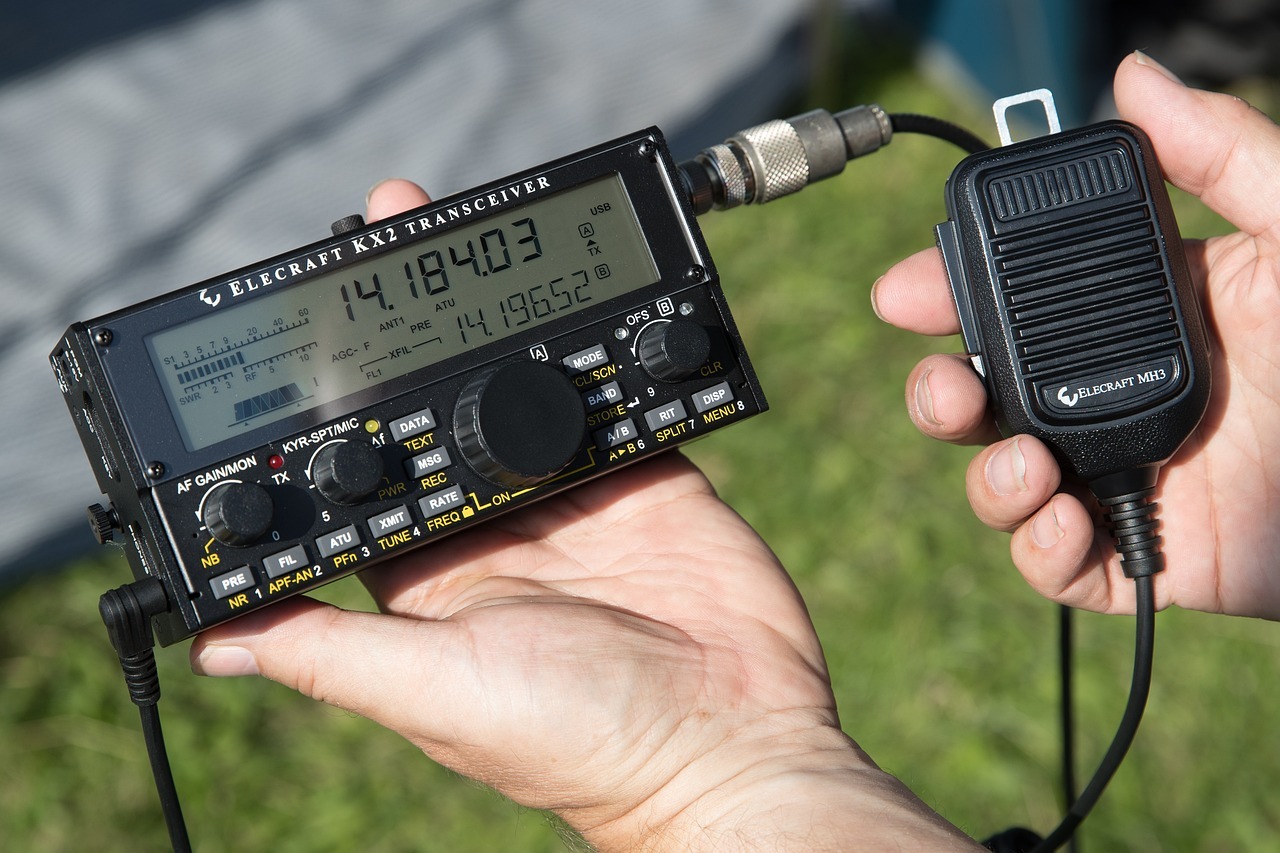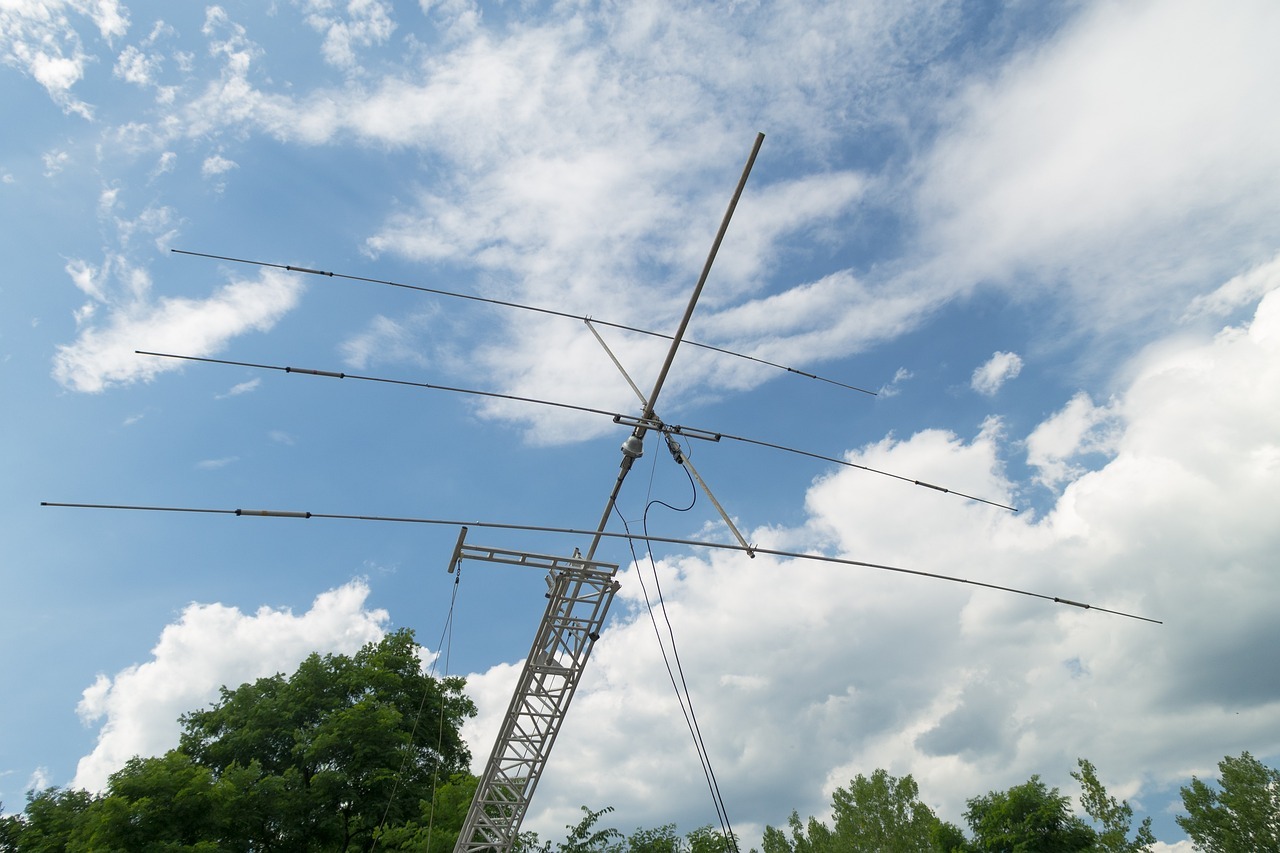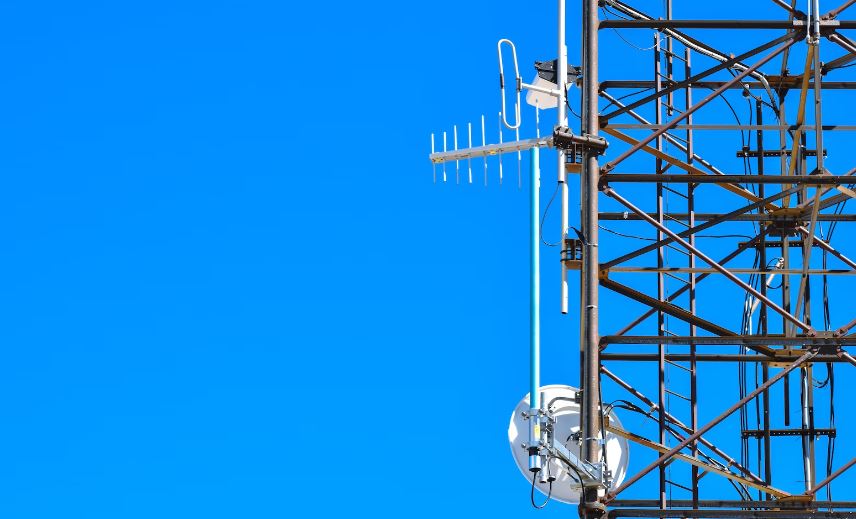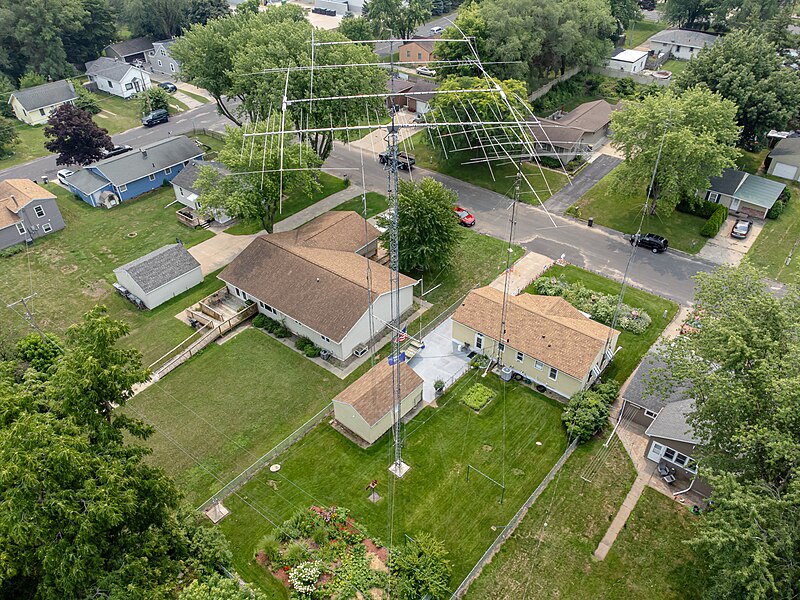What is Ham radio?
You can make ham radio into anything you desire. Much like amateur radio operators did decades ago, you can converse over the airways. From the convenience of your home or car, you may also benefit from the newest digital modes and stay current with technology. How did Ham radio get to where it is today?
The first “amateur” radio operator was Marconi
The history of how Guglielmo Marconi developed radio and became the first “amateur” to use it for transatlantic communications in 1901 is widely available. Before that experiment, Marconi developed a communication system in the 1890s using Heinrich Rudolf Hertz’s notion that radio waves existed. In the early 1900s, amateurs began using the airwaves, and the first “wireless” club was established at Columbia University in 1908.
Early on, Marconi received praise. A crowd gathered in New York City a few days after the Titanic fell in 1912 to applaud the guy who invented the technology that made sure survivors of that illustrious catastrophe were found. Two of Marconi’s Marconi Co. wireless operators sent out telegraph signals for help as the ship fell into the water, even though Marconi and his family opted not to travel aboard the renowned ship.
World War I resulted in the termination of ham radio
By 1910, there were tens of thousands of amateur radio operators active worldwide. However, the start of World War I in 1917 put an end to amateur radio until the conflict was over and operators could restart on-air operations.
Operators of ham radios are assigned worthless frequencies
In the early days of radio, amateur, commercial, and government stations all shared the same radio spectrum while transmitting Morse code utilizing spectrum-intensive spark-gap transmissions. In essence, amateurs were the operators working for commercial and governmental stations who were not professionals. Since there was so much interference in those early years, the government intervened in 1912 to designate particular bands to each category of radio user. Over 1.5 MHz, which was deemed useless for long-distance use at the time, was where amateurs were forced to operate.
After amateur radio operators started using government-issued call signs in 1913, there was a brief lull in activity. However, things picked back up, and by 1917 there were up to 6,000 licensed hams. However, because the Navy would not give up control of radio operations in the United States, World War I kept hams off the air well after the war’s conclusion until late 1919. Only after amateurs applied pressure on Congress to allow them back on the air was the ban lifted.
The 1920s saw the start of long-distance ham radio transmissions.
Amateurs in Connecticut and England made the first transatlantic link in 1923, making long-distance communication possible. The identification of what are essentially today’s 80/75, 40, 20 and 10-meter bands, as well as the development of call signs per nation, were the outcomes of international conferences that took place in 1927 and 1928 as a result of these long-distance communications. Ham radio operators used to identify themselves on the air by using their initials. By the end of the 1920s, hams had access to the 160- to 5-meter bands as well as some extra UHF capacity at 400 MHz.
In the 1930s, hams switched from spark gap to Morse code.
Wideband spark-gap transmitters came to an end in the 1930s when tubes made it possible for hams to use Morse code instead of CW on designated frequencies. During the decade, several hams also began experimenting with voice transmission over the airways. Single sideband operation was of marginal interest in the 1930s, but it wasn’t until 1947 that SSB trials on ham HF frequencies were conducted.
The American government issued a decree in 1940 prohibiting American hams from connecting with any foreign stations and relegating them to frequencies above 56 MHz. With the onset of World War II, amateur activities came to a halt in Europe and Canada.
Ham radio operators were limited to VHF frequencies during World War II.
After the attack on Pearl Harbor in 1941, amateur radio operations during the war were banned in the United States, while hams working under the aegis of the War Emergency Radio Service were still permitted to use VHF on the 112 MHz band. At the height of World War II, there were 60,000 amateur radio operators, but 25,000 of them are thought to have been active military personnel.
Maximilian Kolbe is the ham radio community’s patron saint.
Father Maximilian Kolbe, SP3RN, a priest, was detained by the Germans during the German occupation of Poland in World War II because they thought he was using his ham station for espionage. In 1941, after being transported to Auschwitz, the Germans issued an order for the execution of 10 captives as payback for their escape. Kolbe offered to stand in for one of the individuals the Germans had condemned. He was recognized as a martyr of mercy and an apostle of Mary’s consecration by Pope John Paul II in 1982. Nowadays, Saint Maximilian Kolbe is revered as the world’s patron saint of hams.
Hams started VHF operations after the conclusion of the war in 1945, continuing to do so until all HF bands were made available for use in 1946. The availability of war surplus VHF equipment led to an increase in new activity above the HF bands, and the 2.5- and 5-meter bands were replaced by the 6- and 2-meter bands. Due to the availability of war surplus in the late 1940s, amateur RTTY, or radioteletype, was also developed.
The FCC’s ham radio license classes’ historical development
The Federal Communications Commission developed further new classes in the 1950s, including Novice, Technician, and Extra, while the previous Class A, B, and C amateur licenses were renamed Advanced, General, and Conditional. Novice permits offered operation on two HF band segments as well as voice on 2 meters, but they were only valid for a year and could not be renewed. These early technicians were not allowed to operate over 220 MHz. The Morse code competency exam was 5 words per minute for beginners and technicians and 13 words per minute for the remaining groups.
Operators of ham radio transmit signals into space
Moonbounce was created in 1953 when Ross Bateman, W4AO, and Bill Smith, W3GKP, bounced 2-meter signals off the moon from a station in Virginia, more than 15 years before a man would set foot on the moon.
The development of OSCAR (Orbiting Satellite Carrying Amateur Radio) satellites for space communications and the emergence of interest in FM repeaters made the 1960s an important period in the history of amateur radio.
In the 1970s, ham radio repeaters gained popularity
But it wasn’t until the 1970s, when they began to spread, mostly on 2 meters and in some cases on 440 MHz, that repeaters became an integral part of amateur operations. The market for hams to purchase outmoded commercial repeaters for retooling on the 2-meter and 440-MHz bands opened up when the FCC informed commercial licensees that their operating bandwidth was being restricted. In addition, when the 10-, 18-, and 24-MHz bands became available for usage in 1979, hams had new privileges.
Along with the growth of personal computing, amateur radio also benefited from it in the early 1980s. As soon as the FCC permitted the use of ASCII signals on ham bands, packet communications—basically keyboard-to-keyboard communication through amateur radio—took over.
Morse coding is no longer necessary to obtain a ham radio license
One of the largest changes in amateur radio occurred in 1991 when the FCC decided to create a new no-code Technician class license in agreement with the American Radio Relay League. This license did away with the requirement that applicants prove their fluency in Morse code. Before the start of the new century, there were more than 700,000 licensed hams in the United States as a result of the change’s expansion of the amateur ranks. Because the main distinction between Generals and Techs was that Generals could read Morse at a speed of 13 words per minute, Technician-class license holders who passed a test for 5-words-per-minute Morse proficiency were granted Novice HF privileges, creating a new category of hams known as “Technician Plus.”
In the 2000s, those Tech Plus license holders had the option of applying for General class licenses. Eventually, Tech Plus license holders outnumbered Novices.
However, the FCC only allowed three ham license classes—Technician, General, and Extra—instead of the previous six in 2000. Even now, holders of Advanced, Tech Plus, and Novice licenses may renew them; however, no new such licenses have been issued since that time. The Morse requirement was also simplified, with the code speed for Extra license holders dropping from 20 words per minute to 5 words per minute and for the General license from 13 words to 5 words.
The 2003 adoption of international norms gave each nation the freedom to decide whether or not amateurs should demonstrate Morse code proficiency for HF operations. The FCC thereupon declared in 2006 that it would do away with the code requirement for new licensees, and the decision became effective in 2007. As a result, the two Tech classes were consolidated into one, and all Tech license holders received Tech Plus rights for HF operating. Many formerly unlicensed hams who had been hindered by the Morse barrier as a result of the shift now had licenses.
TV and digital transmissions are transmitted via ham radio technology
The vast global network of Digital Mobile Radio, which enables hams to speak with one another anywhere in the globe with just a handheld digital transceiver, is one way that amateur radio operators today stay on the cutting edge of technology. The amateur radio service is still primarily an experimental service, just as it was throughout its early development, and it is the only thing that has not changed.
What Characteristics Define Ham Radio?
One of the main benefits of a ham radio is that, as long as you have enough power and a clean frequency channel, you can use it anywhere in the globe without any limitations. A ham operator can communicate with other operators using Morse code by using their radios, which is another benefit.
Is a Ham Radio Dependable in Emergency Situations?
When an emergency arises, ham radios are dependable. Without an internet connection, you can use them to converse with nearby ham radio operators.
How Do Ham Radios Operate?
A transceiver that can operate on the frequency bands designated for amateur and shortwave listeners on the ham radio frequencies is known as a ham radio.
A microphone, an amplifier, a speaker, and a control panel are all common components of a ham radio. An output connector on the control unit allows you to attach headphones or loudspeakers. It occasionally has an input jack for attaching external devices, like CD players or microphones.
The majority of ham radios typically provide an RF power output of 10 watts (50 milliwatts).
What Are Ham Radio’s Benefits and Drawbacks?
The ability to communicate with others who own ham radios is a benefit of utilizing one. If you need assistance in an emergency, this is extremely helpful. The inability to converse with others without one and the short range of ham radios are its drawbacks.
What Are a Few Applications of Ham Radios?
- Employed by soldiers to communicate with one another.
- Employed by amateur radio operators for networking and knowledge sharing.
To communicate during catastrophes or disasters, many law enforcement departments use ham radios.
- Used to facilitate communication amongst those who might not have access to cell phone coverage during a natural disaster or emergency.
- Used in charitable events like marathons and cycling competitions.
- To communicate during catastrophes or disasters, police enforcement services use ham radios.
How Much Does a Ham Radio Cost to Purchase?
Ham radios range in price from $100 to $2000 depending on the brand and features.
Frequency range, antenna type, power output, and weatherproofing are a few features that could have an impact on the cost.
What Distinguishes a Walkie-Talkie from a Ham Radio?
A tool made for long-distance communication is a ham radio. Both recreational and emergency conversations can be carried out with it. It performs better than a walkie-talkie. A walkie-talkie is a considerably smaller and less powerful device that can only be utilized inside a small area.
Should you explore ham radio?
At its inception, ham radio was among the most expensive forms of communication equipment available. The tremendous array of communication technologies we have today would not exist without ham radio.
Even the scientific community benefits from the continued advancement of this technology. Even now, ham radio is used by astronauts and on international space stations.
Despite the fact that many people think ham is one of the most inventive technology ever created, not everyone will be interested in trying it out for themselves. Only a small subset of people are passionate about ham technology. But lately, curiosity about this technology has increased.
Conclusion
Ham radio might not seem like a popular choice in a world when it appears like everyone has access to the internet. However, ham technology provides dependability when it is unavailable elsewhere.
You can make sure that you maintain contact during emergencies by using the appropriate ham radio technology. Even in the absence of TV coverage, you can listen to local emergency broadcasts.
Even when other networks like cellphones, the internet, and others are unavailable, ham radio keeps operating. Ham radios that run on alternate energy sources, such as batteries and solar cells, are also available. When you need it most, ham is quick and dependable.
Ham is also a great way to get to know a new neighborhood. Because they are interested in the history of radio, many people participate in ham radio channels.
However, it’s simple to meet a lot of friends who share your interests once you start participating in some of the beginner’s ham radio forums. You could discover that the thrill of looking for the perfect frequencies draws you in. solar panels. When you need it most, ham is quick and dependable.








